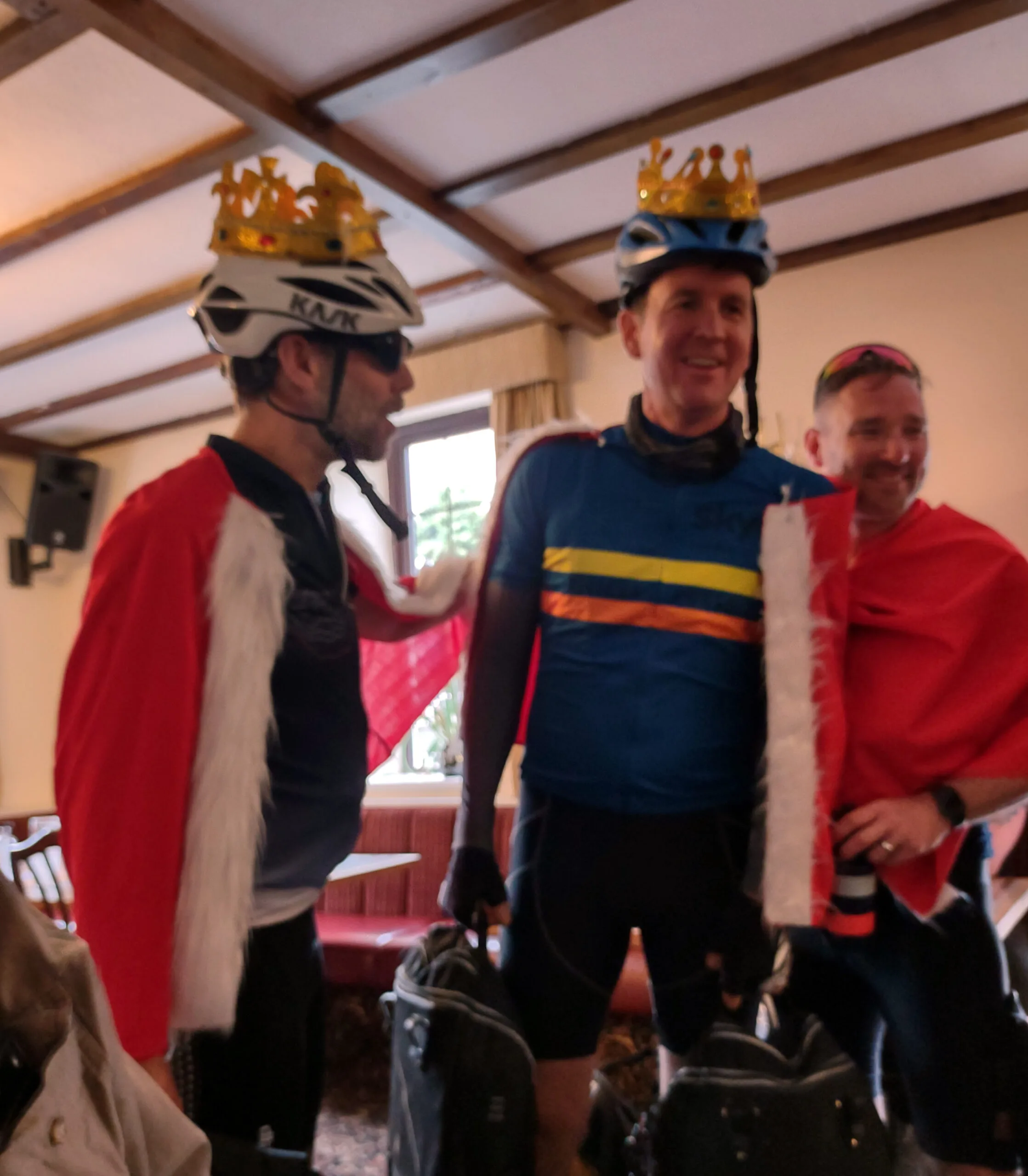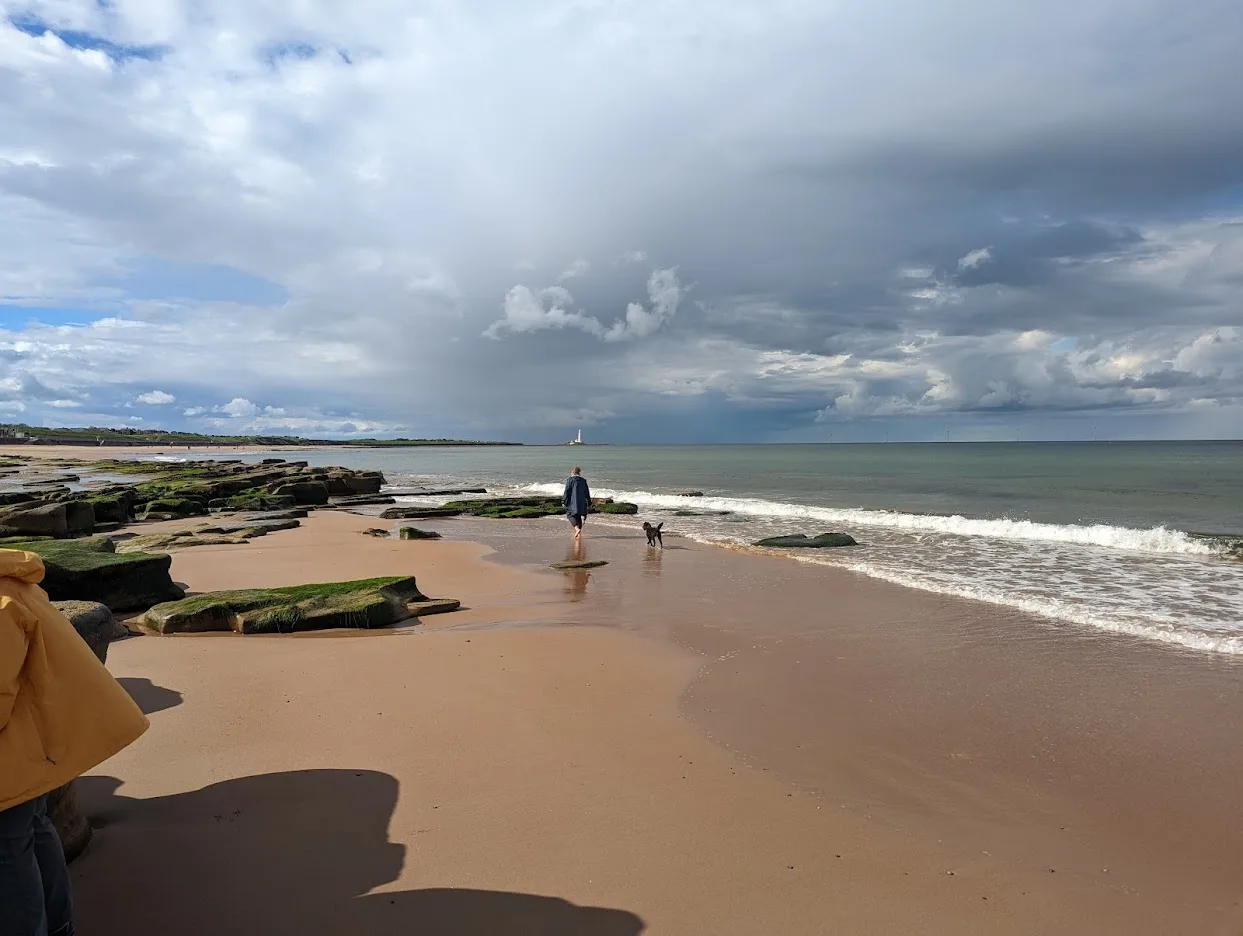Kind Cumbrians cheered us on as we hiked the last few miles of the wall. Now on to the Queen’s Jubilee celebrations.
 |
| The churches of Cumbria are built of reclaimed wall stone, including pagan shrines and inscriptions. |
The last few hundred yards of the Hadrian’s Wall path took us down the main street of Bowness-on-Solway, population 1126. It being a warm day in June, there were people out on their business or sitting in their front gardens. Each smiled and nodded, or offered congratulations and last-minute encouragement.
Rambling is a uniquely British pastime, supported by a network of footpaths across private land. We have no equivalent in America, and it’s a wonderful way to see the backside of Britain—its farmyards (complete with ordure), sheepfolds and gardens. The Roman engineers were interested in a strategic fort to keep the Picts out, so the wall misses most settlements and marches resolutely east to west.
 |
| These fellows were celebrating a bike ride across England in honor of the Queen's Jubilee. |
There were places where I thought those engineers were daft as brushes. In the crags of Northumberland National Park, the wall seesaws crazily across sharp rises and gullies. It’s miserable hiking, so it must have been just terrible for the toiling stonemasons. “Why didn’t they just fill these parts in and make less work for themselves?” I grumbled as I lurched down yet another steep pass.
The wall is an amazing feat of architecture. Much has been dismantled, for shielings, barns, walls, byres and houses. But what remains still stands impossibly true 1900 years later.
 |
| There are times on the path when you are walking through someone's back garden. |
Bowness-on-Solway is the terminus because it’s the westernmost point where the Solway Firth can be forded at low tide. There was once a large fort and garrison stationed here. Other defenses continue 40 miles down the coast to Maryport. Selgovae raiders weren’t the only problem; there were also troublesome Celts just across the Irish Sea.
But here is where the wall itself ended. The wall’s second-largest fort, Maia, lies under little Bowness-on-Solway.
 |
| Drumburgh castle has bits of Roman arch and shrine in its walls. It's a private home today. |
The wall is disembodied, but its presence is all around us. In places, it shows as a stiff turf line in low meadowlands. Bits and bobs are baked into churches, houses, and the 14th century pele-tower castle at Drumburgh.
 |
| Alas, no wading in the Irish sea for me. |
The Cumbria shore looks tranquil but is prone to flooding. Signs warn us against quicksand and fast current changes. We’ve tramped through fields containing innumerable cows, sheep and horses, but it was here that we finally encountered a beast who took umbrage. She quickly decided to boss someone else around.
 |
| Our intrepid group, from left: Alison, Doug, Kenneth, Martha, me and wee Poppy, who took at least twice as many steps to go the same distance. |
Perhaps fewer people than I imagine really finish the walk. “We just had a party quit in Carlisle,” the publican at The Inn at the Bush told me. “They were in their 30s.” A walker we encountered in Burgh-by-Sands told us that his partner had quit along the way. Yet this is considered the easiest of all the national pathways.
 |
| Yarn bombing seemed silly in Manhattan, but is so right for the Queen's Jubilee. |
As for us, our feet are terribly blistered. We ache in places we didn’t even know we had. But today we stuff our hiking clothes in a plastic bag and dress for a weekend in Yorkshire. This is the Queen’s Jubilee, and we are looking for lawn fetes and evensong in her honor.






